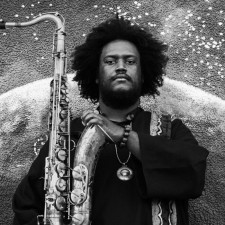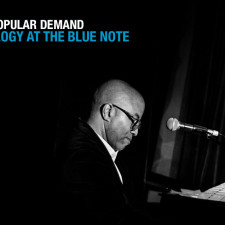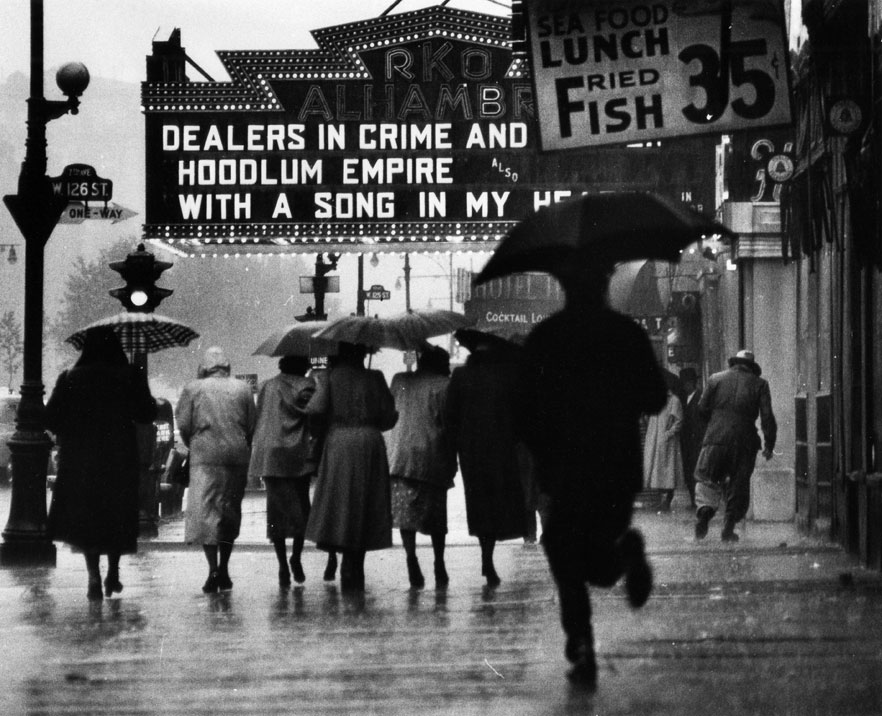
Harlem Neighborhood, Gordon Parks, 1948. Park’s photography often depicted the everyday lives of African Americans with dignity in the face of persistent challenges to social equity.
The blues musical sensibilities that spawned gospel, jazz, rock and other American popular music styles were “secular” in their surface sheen but also spiritual, concerned with the ineffable, and depended on zealous devotion from their legions of fans and practitioners. Religion professor Robin Sylvan writes in Traces of the Spirit: The Religious Dimensions of Popular Music that the numinous is “a central ordering structure for human beings” and an “underlying substructure for all cultural activity . . . .the foundation for culture in general.” Music, he argues, is a natural conduit for religious meaning and expression because it can function in and on many levels: the physiological, psychological, sociocultural, semiological, virtual, ritual, and spiritual. While musical appreciation and devotion may not replace traditional religion, Sylvan believes that musical subcultures provide as “all-encompassing an orientation to the world as any traditional religion” does. And I would add that this capacity extends to art music in the concert world as well. As we have already learned, the establishment of an “art sphere” in the 19th-century American music landscape borrowed heavily on religion discourses such as the idea of “edification.” From the body-oriented, religious-like fervor generated in blues-derived music to the sanctified, hallowed halls of high-art music, we see in the historical arch spanning the first fifty years of the 20th century, the entanglements of sound, spirit, and the sanctimonious in African American music culture. By and large, these aesthetic values defied the industry’s commercially motivated ideas about “genre,” a social ordering that served more to restrict than to liberate.
While the African American church remained the principal venue for early gospel music in years leading up to the 1930s, it shared with ragtime and blues similar relationships to vernacular cultural sensibilities and to the culture industry. Many rural and urban churches maintained the energetic, kinetic, and vocally dramatic conventions established in the spirituals tradition. A shift occurred when composers such as Minister Charles A. Tindley, began to write and publish religious songs made specifically for his own services, innovating the gospel hymn with accompaniment, verse/chorus structure, and improvisation. Recordings began to circulate other forms of early twentieth century religious music as well, including the energizing blues-shouting vocals and “jig time” piano of Holiness singer Arizona Dranes and rural church music for solo vocalist and guitar accompaniment. All three streams would inform the genre of gospel music which emerged in Chicago in the 1930s.
Within the community theater of the black church, one of the most vibrant and autonomous institutions in African American communities, publications such as Gospel Pearls, first appearing in 1921, served to canonize the “on the ground” musical tastes of congregations. The collection is drawn from several origins: standard Protestant hymns, hymns from the lining-out tradition, spirituals, songs by Charles Tindley and other writers. From the 1930s on, songwriters Lucie Campbell (1885-1963), W. Herbert Brewster, Sr. (1897-1987), singer and music publisher Sallie Martin (1896-1988), and pianist, singer, and publisher Roberta Martin (1907-69) all contributed to creating gospel music, a newly formed genre that combined the melodic inflection of the blues, the ragged rhythms of “jig” piano, the fervor and intensity of the ring shout, and the entrepreneurial instincts of popular music. At the center of this creative force was Thomas A. Dorsey (1899-1993), a preacher’s son, who moved to Chicago from Atlanta in 1916 while pursuing an active career in show business. Dorsey maintained performing and songwriting activities in both the church and entertainment worlds, but by 1931 he had organized two firsts: a “gospel” choir and a publishing company the following year devoted to original gospel compositions. Dorsey also accompanied a singer who became arguably the first gospel performer to become a star outside the church, Mahalia Jackson (1912-72), a performer whose blues-based vocal singing style became the gold standard of the genre for decades.
Since the codification of ragtime piano, pianists developed highly idiosyncratic approaches to solo and ensemble-based improvisation that constituted key elements in the generic codes of various black popular musics. The stride piano of James P. Johnson and Fats Waller, the boogie-woogie style of Meade “Lux” Lewis, and the rollicking “keyboard style” of Roberta Martin’s gospel piano would come to define genres and also supply rhetorical gestures for subsequent styles. Likewise, the conventions of both male and female quartet singing styles moved across the porous boundaries of secular and sacred contexts. Not only did quartet singing continually expand its conventions, groups like the Soul Stirrers, Swan Silvertones, Dixie Hummingbirds, Original Gospel Harmonettes of Birmingham, Southern Harps Spiritual Singers, the well-known Five Blind Boys of Alabama, and the Five Blind Boys of Mississippi stood as paradigms for popular singing groups across genres up to the 1990s.
Although commercial markets thrived on strategies of categorization and containment—“race records” for blacks, country or “hillbilly” music for southern whites, and Hit Parade for middle class whites—musicians and audiences, in truth, borrowed and listened across these social and sonic categories, creating new styles and extending audience bases as a matter of course. The steady migration of southerners to the North exploded once again during the years surrounding World War II and together with a surge toward the abandonment of Jim Crow practices and laws new social patterns emerged, and with them, new musical forms. The infectious swing music of the 1930s, perhaps best personified in the bands of Count Basie, would influence and be supplanted by two new musical styles—bebop and rhythm-and-blues—each articulating various, though not competing, views about leisure, entrepreneurism, art practice, modernism, and identity.
Bebop, also known as modern jazz, emerged in the early to mid-1940s as an instrumental approach to the swing dance aesthetic, an innovation that abstracted some of swing’s core conventions. Drummers disrupted the steady dance beat by dropping offbeat, dramatic accents called “bombs.” In order to sidestep paying copyright fees, musicians wrote compositions by writing new, more challenging melodies on the harmonic structures of existing popular songs. The harmonic structures themselves featured a sophisticated approach that exploited the upper partials—9ths, 11ths, and 13ths—and a strong emphasis on the tritone relationships and flatted fifths. The virtuosic improvisations of instrumentalists Charlie Parker, Dizzy Gillespie, Bud Powell, and Max Roach set jazz on a new artistic and demanding course. Vocalists Sarah Vaughan and Betty Carter influenced legions of singers with their command of bebop techniques. Pianist Thelonious Monk’s idiosyncratic compositional approach and acerbic solo approach emerged as the quintessential voice of new era in jazz.
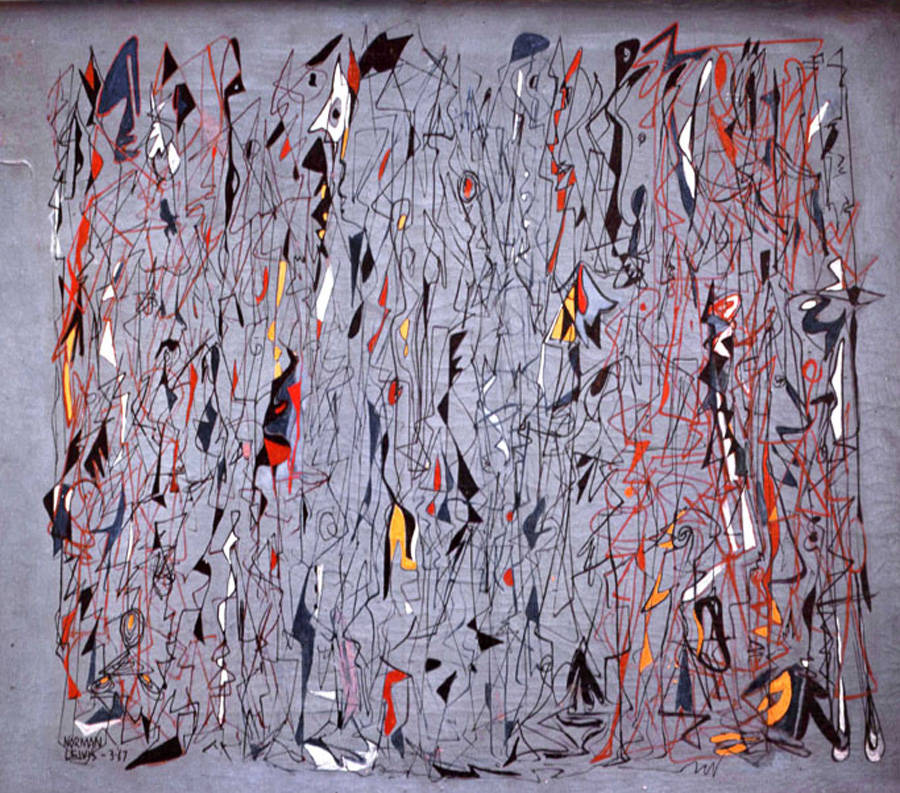
“Twilight Sounds,” Norman Lewis, 1947. Visual artists like Lewis also began to experiment with the idea of “black representation” in their work. Lewis insisted that abstraction–in this case, works that did not depict “blackness” per se could be a powerful medium for African American artists.
If bebop abstracted swing and popular song then early rhythm and blues—an umbrella label for a constellation of black vernacular styles that appeared somewhat contemporaneously—took swing aesthetics and intensified its dance feeling with a heavier backbeat, a proclivity for 12-bar blues form, repetitious and riff-based melodies, and lyrics whose subject matter comprised all of the earthiness and humor of traditional blues, though, with an urbane twist. Perhaps best exemplified by Ruth Brown and Louis Jordan, the style was sonically related to rock ‘n roll, which emerged in the 1950s as a way to market the new dance music to white teenagers during the beginning years of the Civil Rights Movement and fears of desegregation. Although black performers such as Little Richard, Chuck Berry, and Fats Domino certainly counted among early rock ‘n roll stars—many believed it to be another strain of rhythm and blues—as the style became codified as a genre with its own race-specific social contract, it became understood as primarily “white.” The mainstream of rhythm and blues styles featured elements from gospel, blues and jazz, an imaginative repertoire of lyrics employing vivid imagery from black life together with qualities derived from specific locations such as the “urban blues” sound from Chicago and Los Angeles. Independent record labels were primarily responsible for recording and disseminating early rhythm and blues records8.
An important generation of black composers in the concert music tradition would benefit from opportunities that opened up in education for African Americans as a result of the Civil Rights Movement. As a result of this shifting tide, many would secure professorships at American universities in addition to securing major prizes and commissions. Their works, ranging from neo-classical styles to uses of more avant-garde materials, were written for chamber groups, opera, solo singer, and symphonies, among other settings. Howard Swanson, Ulysses Kay, George Walker, Hale Smith, and T.J. Anderson were among those who led the way, establishing reputations within the academy and the larger art music world. In the realm of performance, black musicians continued to build active careers although relatively fewer inroads were gained in the nation’s symphony orchestras, still the most prestigious vehicles for concert instrumentalists. African American conductors found greater success abroad, securing positions in Europe after obtaining rigorous training in American institutions. By contrast, the opera and concert stage proved more generous to singers such as Robert McFerrin, Leontyne Price, George Shirley, Grace Bumbry, Shirley Verrett, and Jessye Norman, all of whom made history by singing roles traditionally assigned to white singers. The predominance of black male composers in this period was striking. Julie Perry, despite formidable forerunners such as Florence Price and Shirley Graham, was singular in her prominence as a black female composer of her generation.
http://www.youtube.com/watch?v=Rec5_nwwElc
From the mid-twentieth century on, stimulated in part by another south-to-north mass migration during and after World War II, black music with roots in the popular sphere—jazz, gospel, rhythm and blues and all their multifarious sonic iterations—defined, for many, the aesthetic core of what was singular about American music culture. Despite their divergent social functions in the public sphere, they shared qualitative and conceptual characteristics. Independent record labels were key in disseminating the music as their owners sought to maximize profits as major labels initially ignored these styles. Ultimately, major labels would seek out, record, and distribute the music, and by doing so, facilitate their dominant national and international impact. Black popular music came to be seen as an important expressive force for the richness of African American culture, as a metaphor for the processes of creativity in such fields as literature, visual arts, and dance, and as a key symbol for the structural integration of black people into the mainstream of American society.
These genres moved along a trajectory that combined a sturdy grounding in historical traditions as well as a perpetual avant-gardism, the latter describing how musicians constantly pushed stylistic conventions into new configurations. Gospel music, while continuing its relationship to the aesthetics of the spiritual and the blues and to the combination of religion and entrepreneurialism that characterized the colonial and antebellum eras, developed into an important incubator of talent for other genres. Gospel singing techniques developed in the black church proved especially impacting as by the end of the twentieth century they defined how many “pop” singers would approach a song. As the decades progressed, innovators such as Rosetta Tharpe, James Cleveland, Edwin and Walter Hawkins, and Albertina “Twinkie” Clark, among others, built on the earlier contributions of pioneers Lucie Campbell, Willie Mae Ford Smith, and Roberta Martin to establish gospel music as a bastion of cutting-edge creativity, marketing savvy, and stylistic influence. It is important to note the centrality of female musicians in gospel music, which in many ways remains singular in the realm of modern African American music production.
Tags: African American Music, Bebop, Black composers, Black Music, Blues, Charles A. Tindley, Gospel, Gospel Music, Jazz, Mahalia Jackson, musicology, Quartet Singing, Sacred Music, Secular Music, Thomas Dorsey


 Share On Facebook
Share On Facebook Tweet It
Tweet It

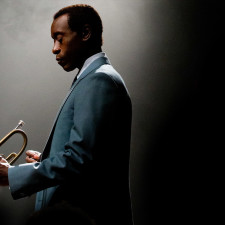

![[Video] BBC Documentary on Allen Toussaint](https://musiqology.com/blog/wp-content/uploads/2015/11/allen-toussaint-225x225.jpg)

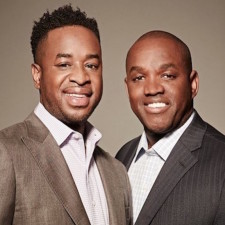
![[VIDEO] Black Music and the Aesthetics of Protest](https://musiqology.com/blog/wp-content/uploads/2015/03/onlynchings1-225x225.jpg)
